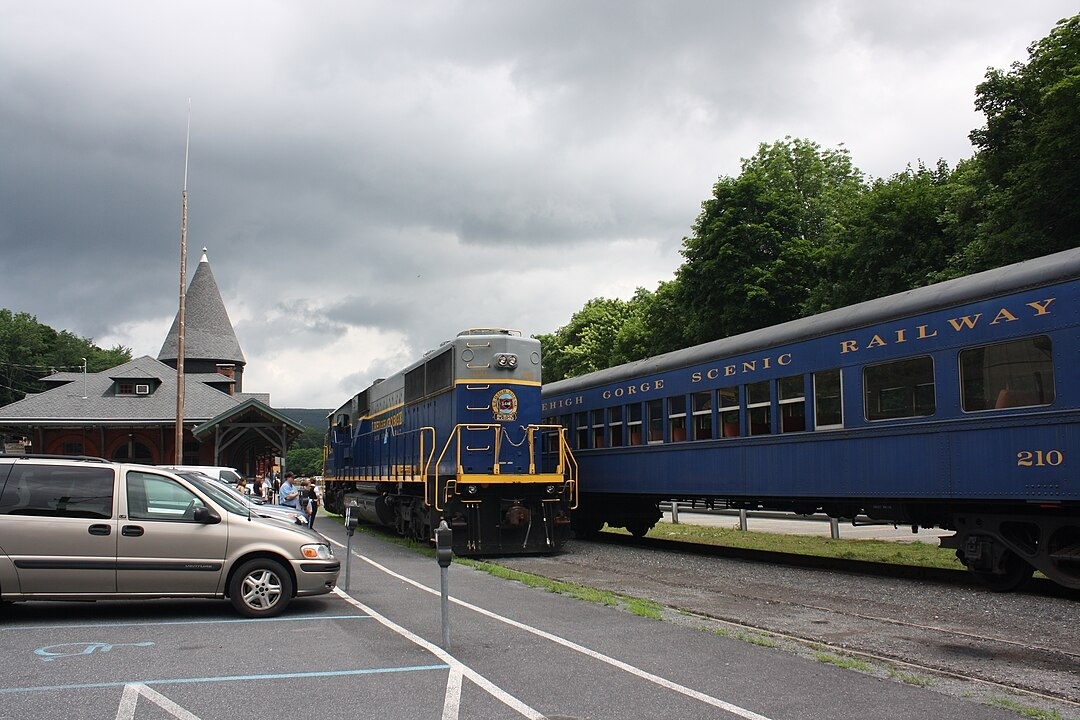Railroads powered the growth of hundreds of American towns, then left many quiet when routes and industries changed. A handful still keep depots, yards, and main streets that look much like they did a century ago. The places below are real railroad communities with preserved infrastructure, museum railways, or operating heritage trains. Each offers visible evidence of the past, from roundhouses and water tanks to original company housing, so a short walk feels like stepping back in time.
1. Thurmond, West Virginia

Thurmond grew on the Chesapeake and Ohio main line as a coal and freight hub. Today it sits inside New River Gorge National Park and Preserve with a restored 1900s depot, intact main street, and active CSX line along the river. The population is tiny, yet the scene stays remarkably complete: brick commercial buildings, rail sidings, and the steel bridge over the New River. Visitors can tour the depot exhibits and watch modern freights pass the same curves used in the steam era.
2. Cass, West Virginia
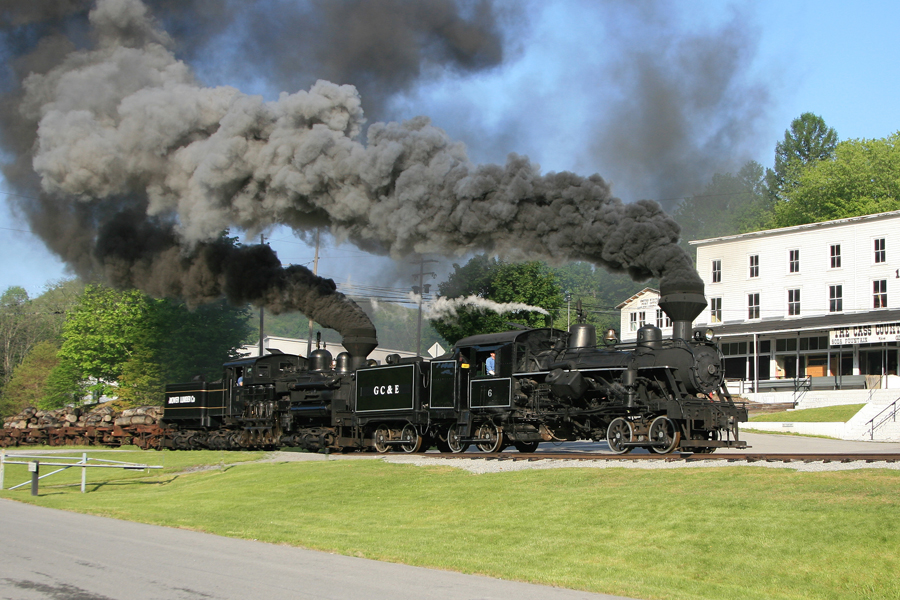
Cass was built for a lumber company railroad that climbed the Alleghenies with geared steam engines. Cass Scenic Railroad State Park preserves the depot, shop complex, and rows of white company houses. Excursions still run behind Shay and Heisler locomotives to Bald Knob and Whittaker Station, using steep grades laid out for logging. The feel is early twentieth century industry, with coal smoke, water tanks, and hand-thrown switches set among the original mill town street grid.
3. Ely, Nevada
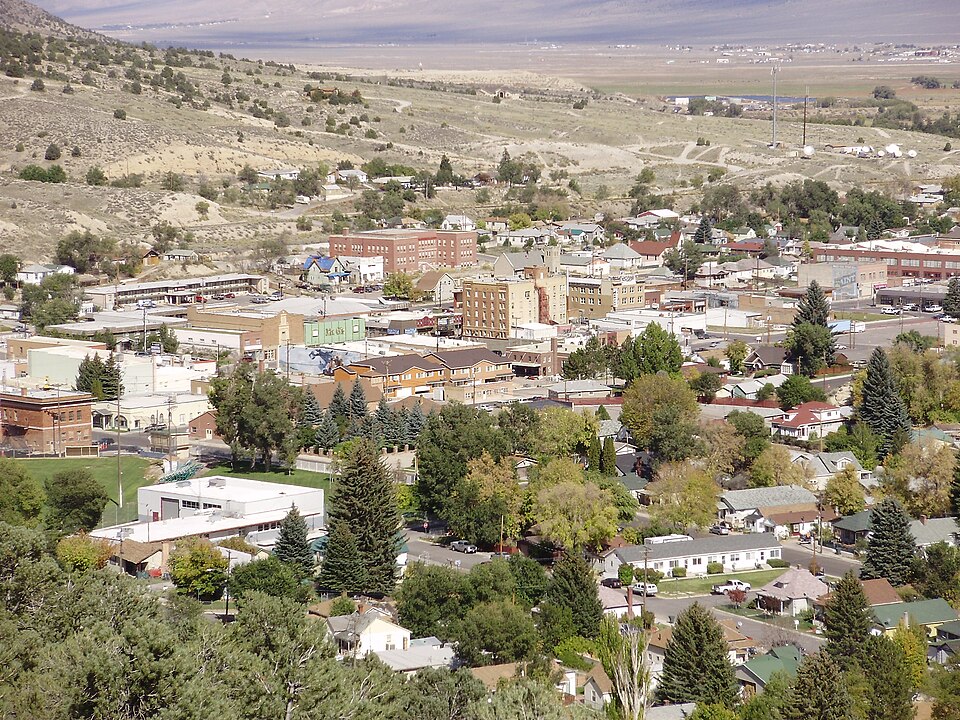
East Ely developed around the Nevada Northern Railway, which hauled copper ore from the mines near Ely to the smelter at McGill. The railroad’s yard survives as one of the most intact in the nation: roundhouse, machine shop, dispatcher’s office, and miles of track. The Nevada Northern Railway Museum operates steam and diesel on the original route, including night photo trains. The site is recognized for its integrity, with equipment, buildings, and records preserved in place.
4. Chama, New Mexico

Chama anchors the southern end of the Cumbres and Toltec Scenic Railroad, a narrow-gauge line that runs 64 miles to Antonito, Colorado. The yard retains water tanks, coaling facilities, wooden trestles, and an 1880s depot. Steam locomotives climb 4 percent grades over Cumbres Pass and cross high timber bridges, duplicating daily operations of the Denver and Rio Grande Western. The railroad and its depots are designated historic landmarks, and the town’s pace still follows the train schedule.
5. Silverton, Colorado
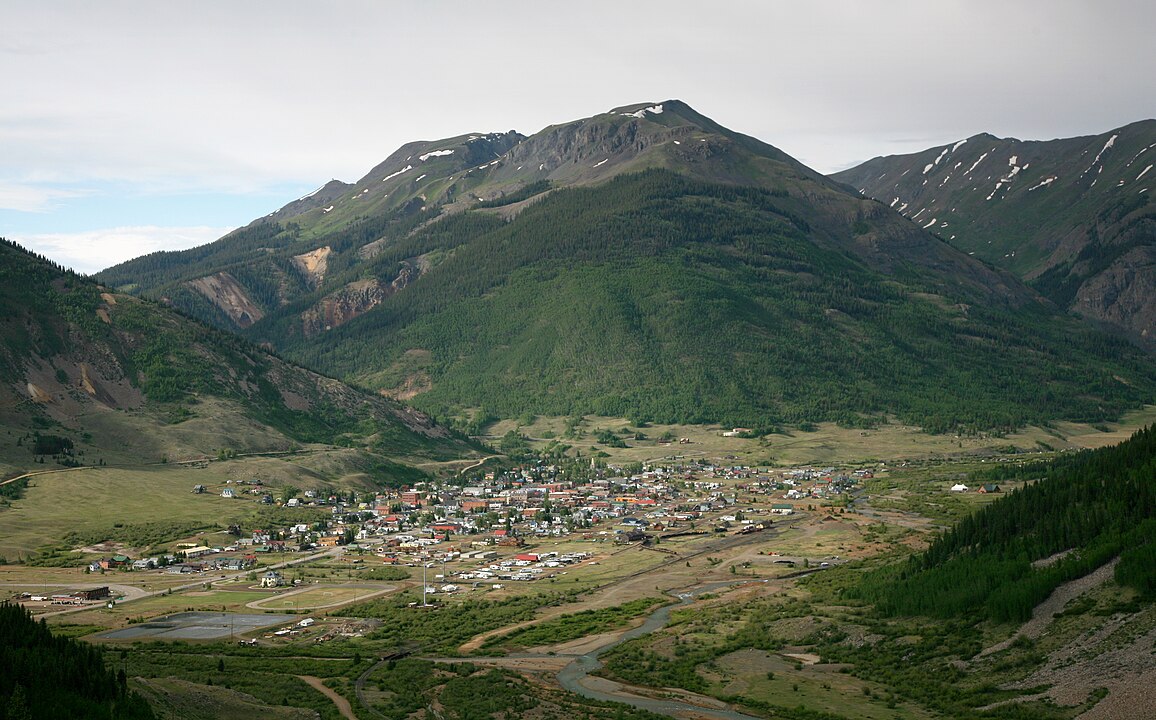
Silverton sits at the terminus of the Durango and Silverton Narrow Gauge Railroad, a former Denver and Rio Grande line in continuous use since the 1880s. Trains arrive on the original alignment along the Animas River, stopping beside the historic depot on Greene Street. The compact grid of false-front buildings and the surrounding high peaks frame a classic mining-era scene. Heritage steam service, period storefronts, and preserved grade crossings keep the town’s rail focus visible every day.
6. Bodie, California
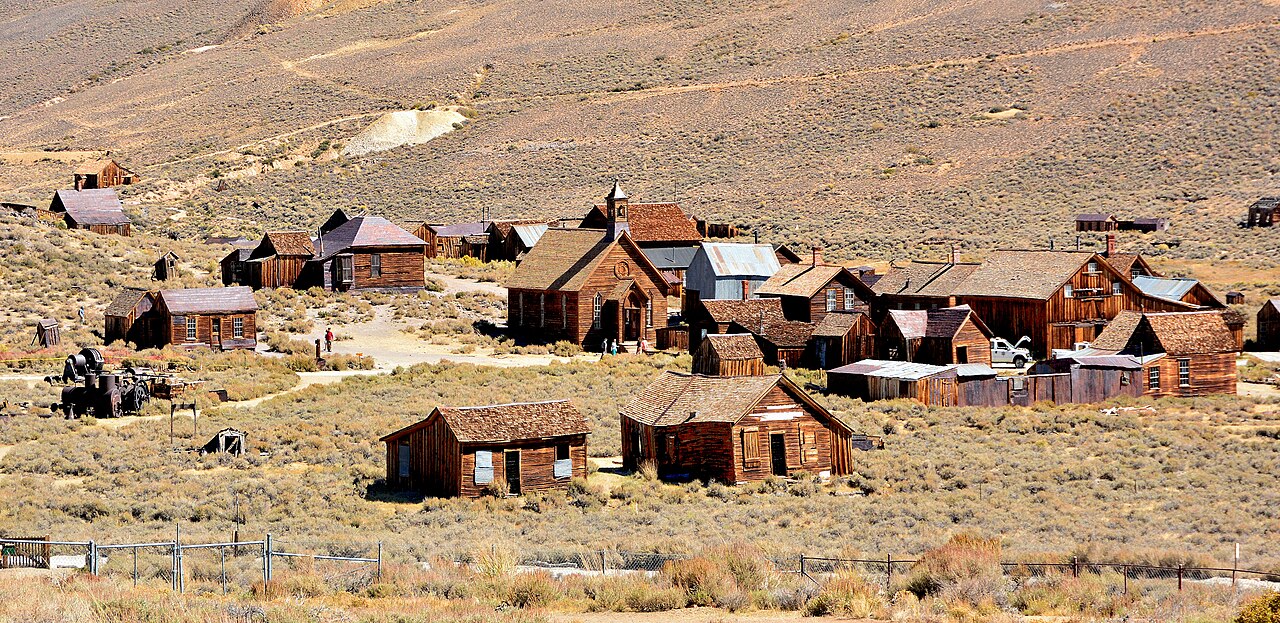
Bodie State Historic Park preserves a gold mining town in arrested decay. The boom depended on the Bodie Railway and Lumber Company, which supplied cordwood and materials to the mills. Today, visitors walk unpaved streets past intact homes, a stamp mill, and commercial buildings left with goods on the shelves. Although the rails are gone, the freight depots, tramways, and alignments remain readable on the ground, giving a clear picture of how rail once fed the high desert economy.
7. Virginia City, Nevada
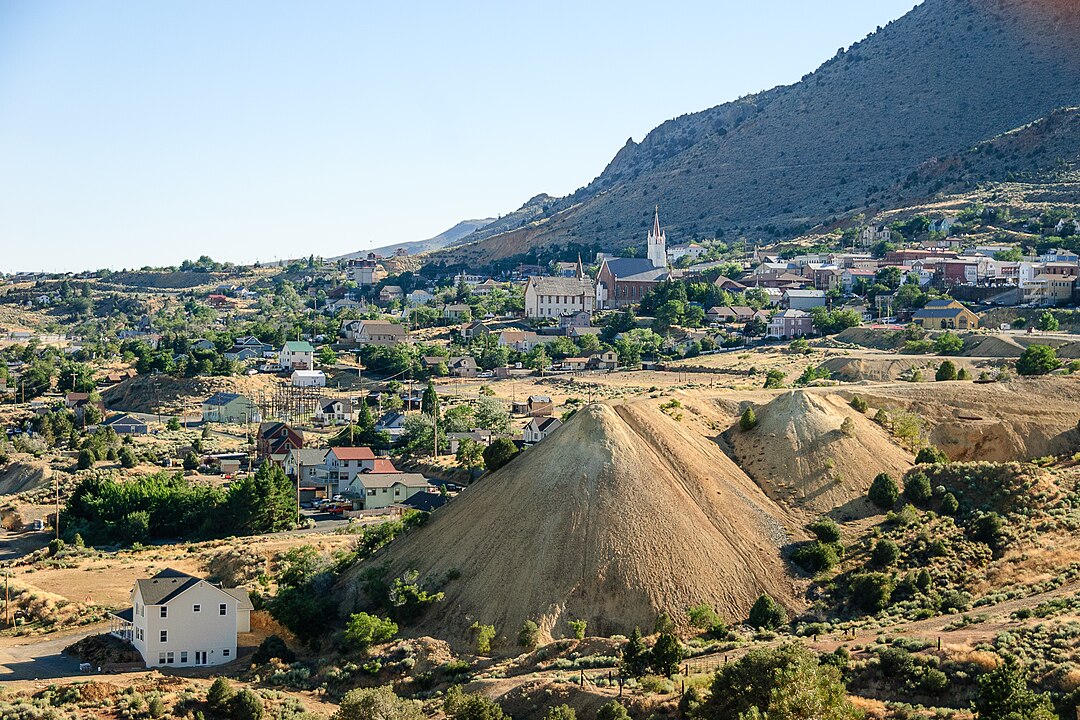
Virginia City grew from the Comstock Lode and kept its nineteenth-century streetscapes. The Virginia and Truckee Railroad linked the mines and mills to Carson City and Reno, and sections of that route now host excursion trains. Boardwalk sidewalks, brick warehouses, and the original depot locations are still easy to spot along C Street. With the hilltop grade visible above town and period buildings intact, the commercial core reads much as it did during the peak of silver production.
8. Leadville, Colorado
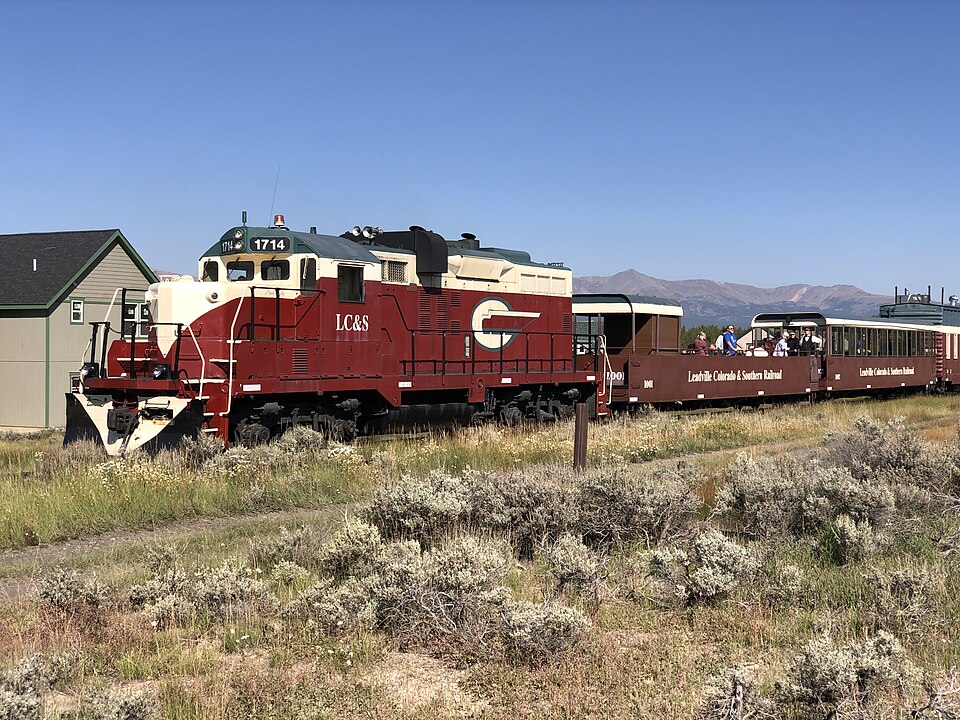
Leadville rose with silver and later lead and zinc shipments carried by the Denver and Rio Grande and the Colorado and Southern. The Leadville, Colorado and Southern scenic train now uses the old grade north of town, departing from a historic depot. Views look over the dismantled yards, ore houses, and headframes that once filled the valley. Street blocks near Harrison Avenue retain late nineteenth-century brick fronts, and the railroad remains central to the town’s museum exhibits.
9. Skagway, Alaska

Skagway’s downtown forms part of Klondike Gold Rush National Historical Park, with six blocks of restored false-front buildings tied to the White Pass and Yukon Route. The narrow-gauge line still carries passengers from the waterfront to White Pass each summer, using the historic alignment. The railroad’s depots, offices, and freight sheds anchor the streetscape, while wooden boardwalks and painted advertising recall the 1898 boom. Ship, street, and rail sit within a few minutes’ walk of each other.
10. Jim Thorpe, Pennsylvania
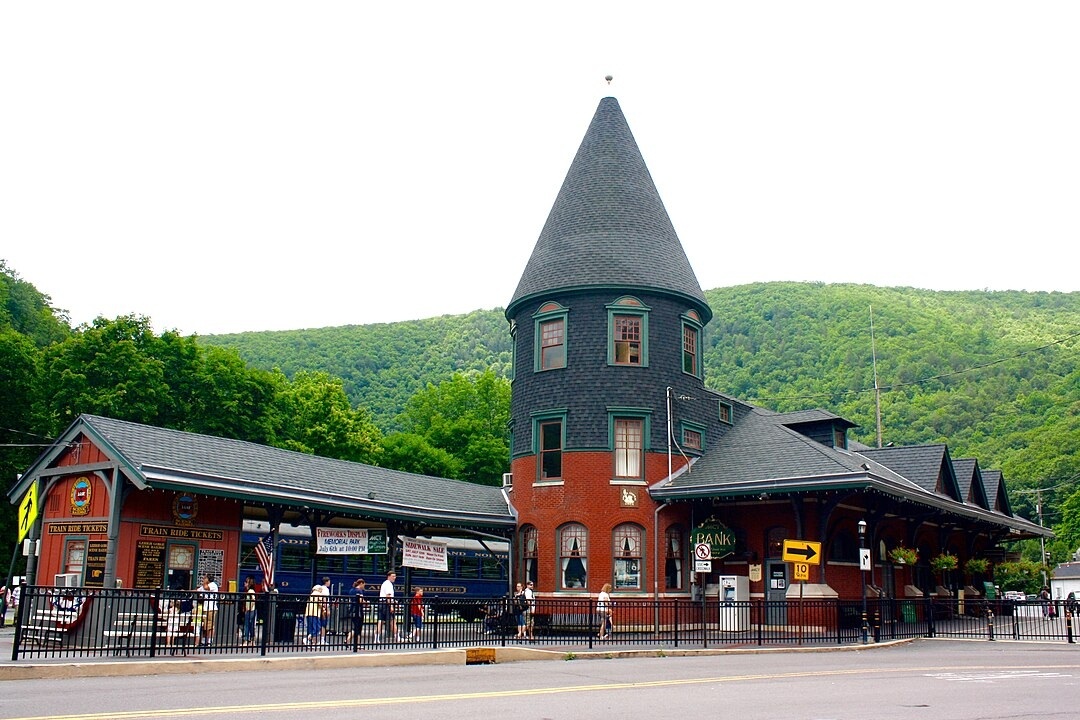
Jim Thorpe, formerly Mauch Chunk, grew around anthracite transport where canals met early railways. The landmark stone station on Susquehanna Street serves seasonal excursion trains into Lehigh Gorge, running on the former Lehigh Valley route. Steep hills hold intact Victorian hotels and rowhouses that overlook the river and yard. The town’s switchbacks, gravity railroad history, and surviving bridges make the original transport network easy to trace, so the center still feels like a nineteenth-century depot town.
